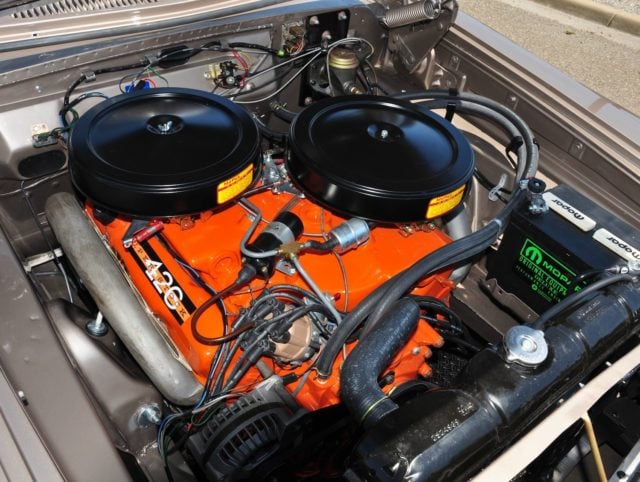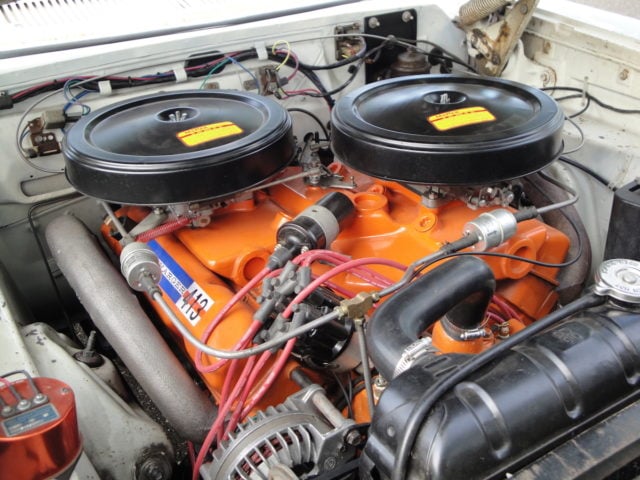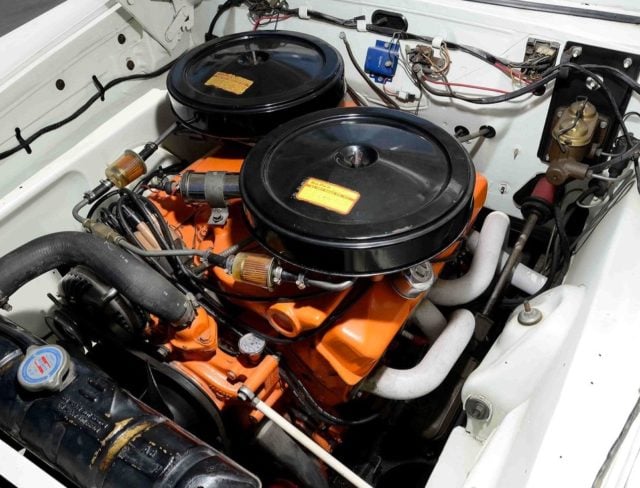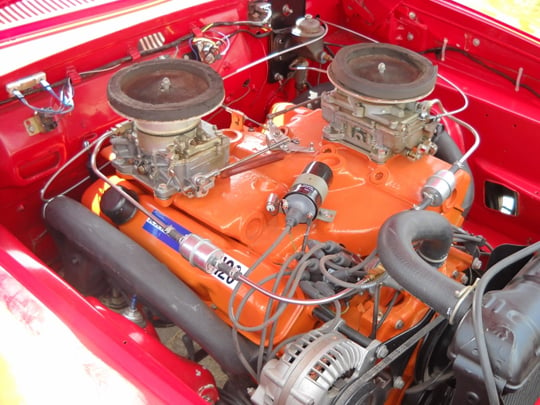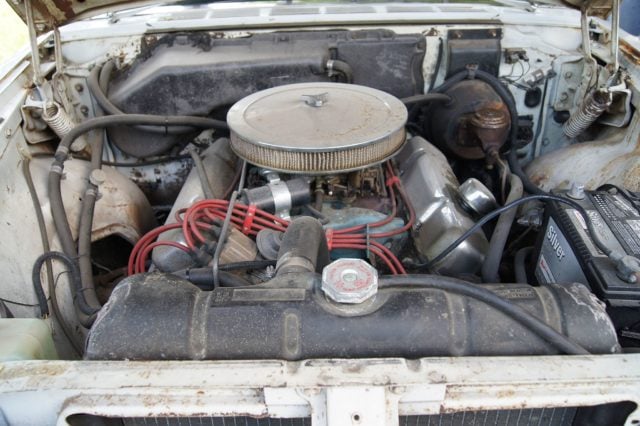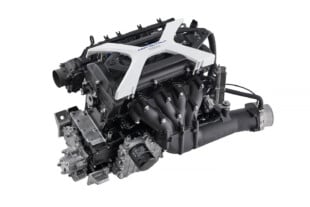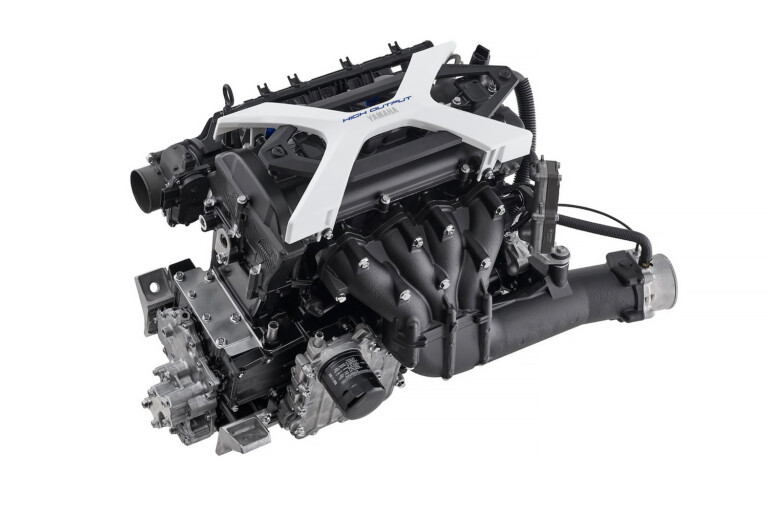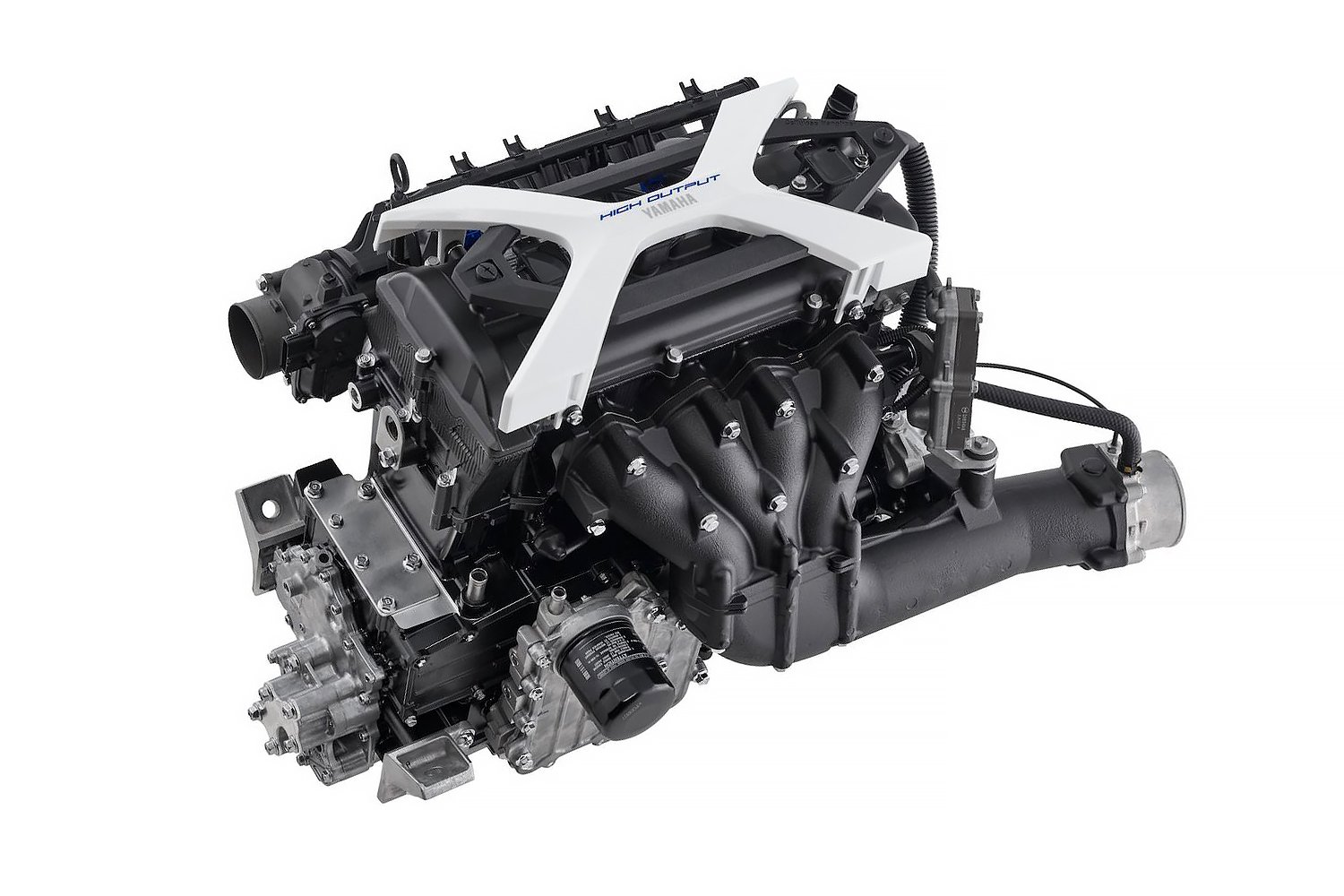In 1963, the musclecar wars were raging and engine power was everything. In January of that year, the Beach Boys recorded “Shut Down” – a song about a drag race between a 1962 Super Stock 413 Dodge Max Wedge and a 1963 fuel-injected Corvette Stingray, and that pretty much summed up the action on American streets and strips for the era.
Drag racing was the hot competition, and every American automaker wanted to win NHRA titles in the factory stock classes. No expense was too high to put muscle on the strip. That commitment led to some legendary low-production factory-built racing cars.
The 413 Max Wedge
When it came to building all-out racing engines, you couldn’t do better than Dodge/Chrysler/Plymouth in the early ’60s. Mopar engines had been burning up tires and setting records across America. In 1962, both the Plymouth Belvedere and the Dodge 330 could be ordered with a 413 cubic-inch engine at 13.5:1 compression. The unique wedge-shaped combustion chambers gave this engine the “Max Wedge” name. The 413 Max Wedge that the Beach Boys immortalized gave the owner 410 to 420 horsepower and right around 500 pound-feet of torque.
The 413 Max Wedge was quite different from an ordinary 413. In particular, the Max Wedge used different heads with 25% larger ports and bigger valves. You also got a special high-lift 300-degree camshaft, double valvesprings, a special intake manifold with 15-inch runners, and twin Carter AFB 650cfm carbs. Inside, the engine had forged connecting rods, 11:1 or 13.5:1 forged pistons, and a baffled oil pan. In Dodge cars, this was called a Ram-Charger 413, and Plymouth called it a Super Stock 413.
A 1962 Plymouth Savoy with a 413 Max Wedge known as the “Melrose Missile” became the first factory stock car to break into the 11 second range in July of 1962. The Missile ran a verified ¼-mile time of 11.93 seconds.
The 426 Max Wedge
Looking ahead to the 1963 competition season, NHRA decided to limit factory Super Stock displacement to 427.2 cubic inches. So it’s no coincidence that the Ford 427 and the Mopar 426 were developed for 1963. Both engines could be ordered in special factory lightweight editions of Super Stock eligible models. General Motors offered the Chevy 409 and Pontiac 421, but the corporation had decided to get out of racing entirely. So apart from Zora Arkus-Duntov working in secret on Corvettes, GM wasn’t really in this fight.
In 1963, you could get a basic Dodge 330 two-door sedan with a 225 Slant 6 engine for $2,245. You could also get your choice of 318, 361, or 383 cubic-inch V8 engines starting at $2,352. The car came with a 3-speed manual column-shift transmission, or you could get the 3-speed TorqueFlite automatic for $211 extra. That was all in the catalog. But if you asked for sales code 08, you received a base trim car with your choice of transmission, plus a twin-carb 426 with 11:1 compression rated at 415 horsepower. The 08 sales code option cost you an extra $445 above the base price, so out the door you were looking at $2,690. Dodge changed the name to Ramcharger (one word) for this engine, Plymouth still called it a Super Stock.
If you wanted the real drag racing weapon, you had to specify sales code 09. You got the 426 with two carbs at 13.5:1 compression and rated at 425 horsepower and 480 pound-feet of torque. With this code, the engine internals were beefed up and you got a 320-degree cam and a special free-flowing exhaust that was quite loud. Oddly, both of these engines were called Stage II, there was no Stage I engine.
In addition to the engine, you could get the Dodge 330 or Plymouth Savoy with lightweight aluminum front bodywork, a hood scoop, absolutely minimal interior. The battery was even moved to the trunk for better weight transfer. With this engine, you could go straight from the dealer showroom and run the quarter-mile in the low 12s at about 116 MPH.
The Max Wedge was the engine you bought to go win yourself a Wally, but it wasn’t easy to drive on the street. The 1963 owner’s manual came with dire warnings.
“The long-duration camshaft provides maximum high-speed output; however, it causes a rough idle operation and lazy low-speed response. The gas mileage of a conventional car cannot be expected.” Further, factory tech bulletins warned, “Wide-open throttle bursts must be limited to 15 seconds to prevent engine damage.”
Making Way for the Hemi
The 413 and 426 Max Wedge engines continued to be made in 1964. In the heyday of 1962-64, you could get these engines in any B-Body Chrysler product. That included the Dodge 330 or 440, the Polara and Polara 500, and the Plymouth Savoy, Belvedere, Fury, or Sport Fury. The 1964 Max Wedge 426 was essentially the same as the 1963 engine, except the top compression ratio was 12.5:1. However, it still made 425 horsepower. Lesser versions of the 413 and 426 engines were available through 1965.
The 426 Hemi first arrived in 1964 as a competition-only option, but the street Hemi showed up in 1965 to replace the Max Wedge. The Hemi stayed strong at 425 horsepower and 490 pound-feet of torque, though actual dyno testing in the period yielded slightly higher numbers. Understating engine power was common in the era. The 426 Hemi was sold in street form through 1971.
The 413 and 426 Max Wedge engines remain competitive to this day in stock drag racing classes. It goes to show what an automaker can do when all-out performance is the order of the day.



